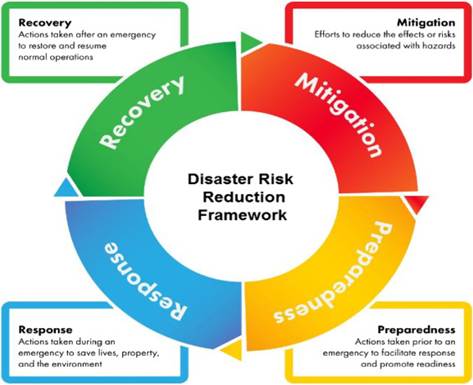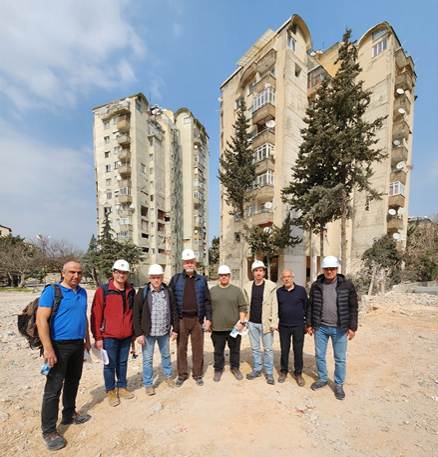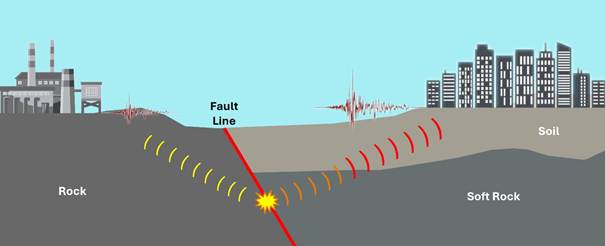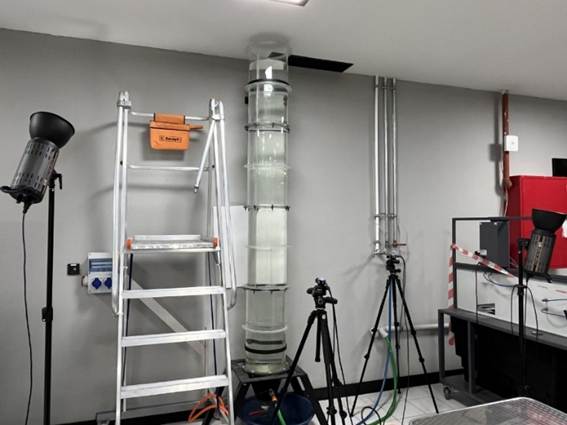Disaster and emergency risk assessment is the cornerstone of building safer, more resilient communities in an increasingly unpredictable world. It’s not only about reacting to disasters after they happen, but also about understanding vulnerabilities, identifying potential threats, and developing smart strategies to reduce impact before a crisis strikes. Urban areas have increasingly become vulnerable to natural hazards due to several factors such as rapid urbanization, urban expansion, population growth, and climate change. Being the two most destructive hazards globally, earthquakes and floods pose significant challenges to disaster preparedness, emergency management, urban safety, and infrastructure resilience. Effective management of these hazards begins with comprehensive risk assessments, which form the foundation for disaster preparedness, mitigation strategies, emergency management, and informed decision-making. Understanding how to assess and mitigate these risks at the urban level is no longer an optional consideration but a necessity for ensuring the safety, sustainability, and future development of urban settlements.

(From https://doi.org/10.1016/j.jemep.2021.100705)
Researchers:
- Prof. Dr. Güney Özcebe
- Assoc. Prof. Dr. Aslı Numanoğlu Genç
- Assoc. Prof. Dr. Cem Akgüner
- Assoc. Prof. Dr. Özkan Kale
- Assoc. Prof. Dr. Rıza Secer Orkun Keskin
- R.A. Neslihan Pınar Gödek
- R.A. Ömer Can Pamuk
Project(s):
- BORIS2 - Cross BOrder RISk assessment for increased prevention and preparedness in Europe: way forward (funded by Directorate-General for European Civil Protection and Humanitarian Aid Operations (DG ECHO) and co-funded by the European Union Civil Protection, GA n° 101140181 – BORIS2 – UCPM-2023-KAPP-PREV, 2024-2025, CI3R (Italian Center for Research on Risk Reduction), University of Ljubljana, Disaster Competence Network Austria, TED University, University of Montenegro)
Publication(s):
- Babič, A., Aktaş, C.B., Rechberger, C., Pejović, J., d’Aragona, M.G., Polese, M., Faravelli, M., Dolšek, M., Aydın, M.F., Fazarinc, N., Serdar, N., Ricci, P., Kastner, R., Keskin, R.S.O., Cattari, S., Poggi, V., Kale, Ö. (2024). Enhancing Urban Disaster Risk Management: A Transnational Analysis of Seismic Risk Assessment Frameworks in Europe, 3rd Croatian Conference on Earthquake Engineering (3CroCEE), 19-22 March 2025, Split, Croatia.
Seismic strengthening of reinforced concrete (RC) structures is a critical component of earthquake risk mitigation, particularly in seismically active regions such as Turkey. Located on several major fault lines, including the North Anatolian Fault Zone, Turkey is highly susceptible to frequent and potentially devastating seismic events. A significant portion of the existing RC building stock was constructed prior to the implementation of modern seismic design codes and, as such, does not meet current performance-based safety standards. These structures pose a serious threat to life safety, economic stability, and post-disaster functionality. Therefore, the assessment and retrofitting of vulnerable RC buildings have become a national priority, with the goal of enhancing structural resilience, reducing potential loss of life, and supporting sustainable urban development. The studies on seismic strengthening of RC structures should aim to contribute to this urgent need by investigating efficient, cost-effective, and scalable seismic strengthening techniques tailored to the characteristics of Turkey’s existing building stock.

Researchers:
- Prof. Dr. Güney Özcebe
- Assoc. Prof. Dr. Cem Akgüner
- Assoc. Prof. Dr. Özkan Kale
- Assoc. Prof. Dr. Rıza Secer Orkun Keskin
- R.A. Ömer Can Pamuk
Projects:
- Damage Assessment Study in a Building Strengthened in 2009 (funded by TUBITAK 1002-C, 2023, Assoc. Prof. Dr. Rıza Secer Orkun Keskin (executive), Assoc. Prof. Dr. Cem Akgüner, Assoc. Prof. Dr. Can Baran Aktaş, R.A. Ömer Can Pamuk, R.A. Mehmet Fırat Aydın)
- SPRING - Seismic Performance of Retrofitted buildINGs: Learning from the 2023 Kahramanmaraş earthquake sequence (application is under review, TUBITAK 1071)
Publication(s):
- Tan, M.T., Binici, B., Kale, Ö., Özcebe, G. (2025). The successful performance of a reinforced concrete building with FRP strengthened infill walls and externally installed shear walls subjected to Kahramanmaras and Hatay 2023 earthquakes. Bulletin of Earthquake Engineering 23, 1183–1202. https://doi.org/10.1007/s10518-024-02062-0
Probabilistic seismic hazard analysis represents a fundamental component of earthquake-resistant design for critical infrastructure, including base-isolated buildings, long-span bridges, tunnels, and lifeline systems. This research field emphasizes the integration of non-ergodic ground motion modeling approaches to better reflect the unique source, path, and site characteristics of seismotectonic environments. Conventional multiple ground motion model frameworks often fail to capture sub-regional variability; hence, backbone ground motion models calibrated with recent Turkish strong-motion records are adopted to enhance the reliability of hazard calculations. Special attention is given to basin-induced amplifications and near-fault directivity effects, which can significantly alter ground-motion intensity and duration, especially in metropolitan regions such as İstanbul, İzmir, etc. Comprehensive 1D and 2D site response analyses are performed to quantify the median and variability of site amplification, while physics-based simulations support the development of probabilistic directivity models for faults. This research field contributes to safer structural design by refining inelastic displacement demand predictions and offers evidence-based insight for the future development of the seismic design codes and standards.

Researcher:
- Assoc. Prof. Dr. Özkan Kale
Projects:
- Hybrid Model Approach in Seismic Hazard Analysis: Development of Hybrid Seismic Hazard Analysis Using Physics-Based Simulation and Ground Motion Prediction Equation for Earthquake Prone Regions (funded TUBITAK 1001, 2025-2027, Assist. Prof. Dr. Abdullah İçen (yürütücü), Assoc. Prof. Dr. Özkan Kale)
- The contribution of hazard-consistent 2D site amplification and near-field directivity effects to inelastic displacement demands in mid- and high-rise buildings: An İzmir example (funded by TUBITAK 1001, 2022-2025, Assoc. Prof. Dr. Mustafa Abdullah Sandıkkaya (executive), Assoc. Prof. Dr. Özkan Kale, Assoc. Prof. Dr. Alper Aldemir)
- EMME24 - The 2024 Update of the Earthquake model of the Middle East (funded by the Global Earthquake Model Foundation (GEM), 2023-2025)
- Regional Representation of Ground Motion Epistemic Uncertainty in Seismic Hazard Analysis of Turkey by Backbone Approach and Investigation of Its Common Impact (funded by TUBITAK 1001, 2021-2024, Assoc. Prof. Dr. Özkan Kale (executive), Assist. Prof. Dr. Bekir Özer Ay, Assoc. Prof. Dr. Mustafa Abdullah Sandıkkaya)
- Evaluation of the Requirement of Complex Functional Forms in Ground Motion Prediction Equations in Terms of Distance Metrics: Regional and Global Applications (funded by TUBITAK 3001, 2018-2020, Assoc. Prof. Dr. Özkan Kale (executive))
Publications:
- Sandıkkaya, M.A., Kale, Ö., Akkar, S., Yenier, E. (2025). A simulation-based regional ground-motion model for eastern Türkiye, Bulletin of Earthquake Engineering, 23, 1001-1015. https://doi.org/10.1007/s10518-024-02058-w
- Sandıkkaya, M.A., Güryuva, B., Kale, Ö., Okçu, O., İçen, A., Yenier, E. and Akkar, S. (2024). An updated strong-motion database of Türkiye (SMD-TR), Earthquake Spectra, 40(1), 847-870. https://doi.org/10.1177/87552930231208158
- Sandıkkaya, M.A., Akkar, S., Kale, Ö., and Yenier, E. (2023). A simulation-based regional ground-motion model for Western Türkiye, Bulletin of Earthquake Engineering, 21, 3221-3249. https://doi.org/10.1007/s10518-023-01658-2
- Akkar, S., Kale, Ö., Sandıkkaya, M.A. and Yenier, E. (2021). A procedure to develop a backbone ground-motion model: a case study for its implementation, Earthquake Spectra, 37, 2523-2544. https://doi.org/10.1177/87552930211014541
- Kale, Ö. (2019). Some discussions on data-driven testing of ground-motion prediction equations under the Turkish ground-motion database, Journal of Earthquake Engineering, 23, 160-181. https://doi.org/10.1080/13632469.2017.1323047
- Kale, Ö. and Akkar, S. (2017). A ground-motion logic-tree scheme for regional seismic hazard studies, Earthquake Spectra, 33, 837-856. https://doi.org/10.1193/051316eqs080m
Microplastics are small plastic particles less than 5 mm in diameter. They originate from a variety of sources, including the breakdown of larger plastic debris, microbeads in personal care products and fibers from synthetic textiles. Microplastics can be transported by wind, water currents and biotic factors. They can travel long distances from their original source. The settling of microplastic particles in water bodies is influenced by size, density, shape and water properties (e.g. turbulence, salinity, temperature). Denser particles settle faster, while lighter particles may remain suspended longer. In modeling studies, the settling velocity of the microplastic particle, which is included in the transport equations, and which best represents the particle properties, is an important parameter that directly affects the success of the model.

Precipitation Column Experimental Setup
Researchers:
- Assoc. Prof. Dr. Aslı Numanoğlu Genç
- Prof. Dr. Gökçe Nur Yılmaz (Computer Engineering)
- Assist. Prof. Dr. Ayşe Çağıl Kandemir (Mechanical Engineering)
- Assist. Prof. Dr. Onur Baş (Mechanical Engineering)
Project(s):
- Investigation of Precipitation Velocities of Regular and Irregularly Shaped Microplastic Particles by Experimental, Numerical and Deep Learning Methods (funded by TÜBİTAK 1001, 2023-2025, Assoc. Prof. Dr. Aslı Numanoğlu Genç (executive), Prof. Dr. Gökçe Nur Yılmaz, Assist. Prof. Dr. Ayşe Çağıl Kandemir (Mechanical Engineering, Assist. Prof. Dr. Onur Baş, Prof. Dr. Hatice Kaplan (Hacettepe University), Prof. Dr. Mustafa Göğüş (Çankaya University))
Publications:
Akar, B., Kandemir, A.Ç.,Numanoğlu Genç, A. ve Kaplan Can, H. “Spectroscopic and Thermal Characterization of Polystyrene and Its Composites with Silica and Halloysite Additives”, 9th Polymer Science and Technology Congress, Ankara, 2024.
Türkmen, Oğulcan. “Computational investigation of drag and settling behavior of micro-meso plastic particles”, Master's Thesis, Advisor: Dr. Onur Baş, January 2024.
Oktamış, İpek Ecem. “Effect of Particle shape on Microplastic Particles”, Master's Thesis, Advisor: Dr. Aslı Numanoğlu Genç, June 2025.